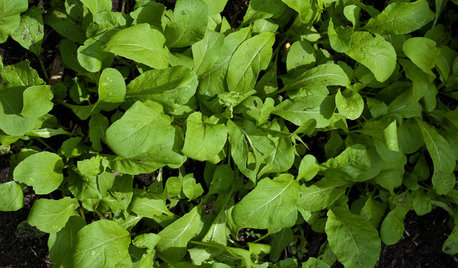Mildew resistant kale varieties for PNW?
plantslayer
10 years ago
Related Stories

GARDENING GUIDES6 New Plant Varieties That Beat Out Their Parents
With better resistance and fewer demands, these garden beauties are worth a spot on your wish list
Full Story
DECORATING GUIDESDiscover the Unstoppable Advantages of Cork for the Home
Look beyond wine stoppers to see cork's ecofriendliness, durability, fire resistance and antimicrobial nature for all kinds of home products
Full Story
EDIBLE GARDENS8 Surefire Vegetables and Herbs for Beginning Gardeners
Learn the edible plants that are popular and easy to grow in a backyard or container garden
Full Story
COOL-SEASON CROPSCool-Season Vegetables: How to Grow Salad Greens
From arugula to radicchio, greens have taken a top spot on the table and in fall and winter gardens. See how to start growing them now
Full Story
FARM YOUR YARDIf You Have Room for Only One Summer Crop ...
Get an edible that’s long on flavor even if you’re short on space, with a long-time gardener’s favorite picks
Full Story
GARDENING GUIDESNew Ways to Think About All That Mulch in the Garden
Before you go making a mountain out of a mulch hill, learn the facts about what your plants and soil really want
Full Story
ROOFSNo Substitute for the Natural Beauty of Wooden Roof Shingles and Shakes
This natural, renewable roof option brings weathered character and nostalgic appeal to traditional-style homes
Full Story
INSPIRING GARDENSFrom Concrete Lot to Gracious Organic Garden in Seattle
Plants, pests and even weeds have a place in this landscape, which offers an edible bounty and a feast for the eyes
Full StoryMore Discussions









Embothrium
oliveoyl3
Related Professionals
Maple Valley Landscape Architects & Landscape Designers · Danbury Landscape Architects & Landscape Designers · Bridgeview Landscape Contractors · Brunswick Landscape Contractors · Camp Verde Landscape Contractors · Emmaus Landscape Contractors · West Coon Rapids Landscape Contractors · Maplewood Landscape Contractors · Norridge Landscape Contractors · Syracuse Fence Contractors · Claremont Fence Contractors · Holbrook Fence Contractors · Kansas City Fence Contractors · Seymour Fence Contractors · Woodinville Fence ContractorsEmbothrium
plantslayerOriginal Author
oliveoyl3
cedar_wa
plantslayerOriginal Author